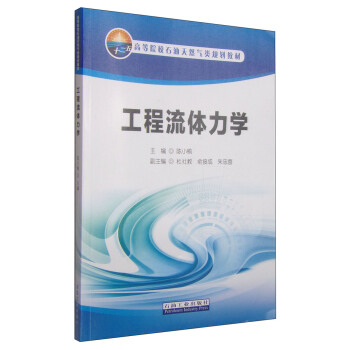

具体描述
内容简介
Some ten years ago, when completing with J.-B. Zuber a previous text on Quantum Field Theory, the senior author was painfully aware that little mention was made that methods in statistical physics and Euclidean field theory were coming closer and closer, with common tools based on the use of path integrals and the renormalization group giving insights on global structures. It was partly to fill this gap that the present book was undertaken. Alas, over the five years that it took to come to life, both subjects have undergone a new evolution. Disordered media, growth patterns, complex dynamical systems or spin glasses are among the new important topics in statistical mechanics, while superstring theory has turned to the study of extended systems, Kaluza-Klein theories in higher dimensions, anticommuting coordinates ... in an attempt to formulate a unified model including all known interactions. New and sophisticated techniques have invaded statistical physics, ranging from algebraic methods in integrable systems to fractal sets or random surfaces. Powerful computers or special devices provide "experimental" means for a new brand of theoretical physicists. In quantum field theory, applications of differential topology, geometry, Riemannian manifolds, operator theory ... require a deeper background in mathematics and a knowledge of some of its most recent developments. As a result, when surveying what has been included in the present volume in an attempt to uncover the basic unity of these subjects, the authors have the same unsatisfactory feeling of not being able to bring the reader really up to date. It is presumably the fate of such endeavours to always come short of accomplishing their purpose.目录
Contents of Volume 2Preface
1 From Brownian motion to Euclidean fields
1.1 Brownian motion
1.1.1 Random walks
1.1.2 The sum over paths
1.1.3 The dimension two of Brownian curves
1.2 Euclidean fields
1.2.1 Free fields
1.2.2 Interacting fields and random walks
1.2.3 Self-avoiding walks and the limit n → 0
1.2.4 Comparison with the high temperature expansion
1.2.5 The one-dimensional case
1.A Lattices
Notes
2 Grassmannian integrals and the two-dimensional Ising model
2.1 Grassmannian integrals
2.1.1 Anticommuting variables
2.1.2 Integrals
2.2 The two-dimensional Ising model
2.2.1 Duality
2.2.2 Transfer matrix
2.2.3 Fermionic representation
2.2.4 Free energy
2.2.5 Spontaneous magnetization
2.2.6 Correlation function in the high temperature phase
2.2.7 Surface tension
2.3 Critical continuous theory
2.3.1 Effective action
2.3.2 Correlation functions
2.A Quadratic differences and Painleve equations Notes
3 Spontaneous symmetry breaking, mean field
3.1 Mean field approximation
3.1.1 Dielectric coastant of a polarizable medium
3.1.2 Classical spin model with a finite symmetry group
3.1.3 Continuous symmetry group
3.1.4 The Bethe approximation
3.1.5 Critical exponents
3.2 Lee-Yang zeroes
3.2.1 The Lee-Yang theorem
3.2.2 The one-dimensional case
3.2.3 General properties
3.2.4 Zeroes in the temperature plane
3.3 Large n limit
3.3.1 Saddle point method
3.3.2 Factorization
3.3.3 Coupling to an external field
3.4 Corrections to mean field
3.4.1 Laplace transform Notes
4 Scaling transformations and the XY-model
4.1 Scaling laws. Real space renormalization
4.1.1 Homogeneity and scale invariance
4.1.2 Recurrence relations in real space
4.1.3 Examples and approximations
4.2 The XY-model
4.2.1 High temperature behaviour
4.2.2 Low temperature expansion. Vortices
4.2.3 The Villain action
4.2.4 Correlations
4.2.5 Renormalization flow
4.A Two-dimensional systems with continuous symmetry
4.A.1 Magnetization inequality
4.A.2 Correlation inequality
4.B Phenomenological renormalization Notes
5 Continuous field theory and the renormalization group
5.1 The Lagrangian and dimensional analysis
5.1.1 Introduction
5.1.2 Generating functionals and dimensional analysis
5.2 The perturbative method
5.2.1 Diagrammatic series
5.2.2 Loop expansion
5.2.3 Evaluation of integrals and dimensional continuation
5.2.4 Group theoretical factors
5.2.5 Power counting
5.2.6 Perturbativc renormalization
5.3 The renormalization group
5.3.1 Renormalization flow
5.3.2 Critical exponents
5.3.3 From the Gaussian ultraviolet fixed point to the infrared critical point in dimension less than four
5.3.4 Correlation functions at the critical point
5.3.5 Expansion near the critical point
5.3.6 Scaling laws below the critical temperature
5.4 Corrections to scaling laws
5.4.1 Deviation from the critical point in dimension lower than four
5.4.2 Logarithmic corrections in dimension four
5.4.3 Irrelevant operators
5.5 Numerical results
5.5.1 e-expansion of critical exponents
5.5.2 Equation of state
5.5.3 Amplitude ratios
5.5.4 Three-dimensional results
5.A Multicritical points Notes
6 Lattice gauge fields
6.1 Generalities
6.1.1 Presentation
6.1.2 The continuous limit
6.1.3 Order parameter and Elitzur''s theorem
6.1.4 Duality
6.2 Structure of the phase diagram
6.2.1 Mean field approximation
6.2.2 Corrections to mean field and restoration of gauge invariance
6.2.3 Discrete groups: 1/d expansion
6.2.4 Continuous groups: computation of corrections
6.3 Strong coupling expansions
6.3.1 Convergence
6.3.2 Character expansions
6.3.3 Free energy
6.3.4 String tension and roughening transition
6.3.5 Mass spectrum
6.4 Lattice fermions
6.4.1 The doubling problem
6.4.2 The Nielsen-Ninomiya theorem
6.4.3 Staggered fermions
Notes
Index
前言/序言
用户评价
当我第一次在书店的架子上看到《统计场论(第1卷)》这本书时,它的名字就吸引了我。我一直在寻找一本能够将统计力学的概念与场论的强大数学工具结合起来的书,这本书似乎正是为此而设计的。我设想,它会从统计力学的基本原理出发,逐步引入场论的概念,比如如何用场来描述一个多体系统的状态,以及如何利用场论的方法来计算系统的热力学性质。我特别期待书中能够对一些经典的统计场论模型进行详细的讲解,例如伊辛模型在统计场论中的应用,以及如何利用重整化群来研究临界现象。如果书中还能介绍一些更前沿的统计场论技术,那就更好了。这本书的出现,为我提供了一个深入学习统计场论的绝佳机会,我迫不及待地想翻开它,开始我的探索之旅。
评分初见《统计场论(第1卷)》,我的脑海中立刻浮现出那些在学术会议上听到的激动人心的报告,以及在研究前沿文献中瞥见的那些抽象而迷人的公式。这本书的名字本身就充满了诱惑力,它承诺将统计学的严谨性与场论的普适性相结合,这对于任何一个醉心于探索物质世界底层规律的物理学家来说,都是一个无法抗拒的邀请。我预感,这不仅仅是一本教科书,更可能是一部能够激发灵感的思想之作。它或许会带领我们穿越微观世界的量子涨落,进入宏观世界的集体涌现,用一种全新的、统一的视角去理解那些曾经看似难以解释的物理现象。我特别好奇书中是否会对各种统计场论模型进行详细的介绍和比较,比如伊辛模型、标度律、以及更复杂的量子场论在统计力学中的应用。如果这本书能够提供丰富的例子和案例研究,那就更妙了,能够帮助我更直观地把握那些抽象的理论。我把它放在书架上,感到一种莫名的踏实,仿佛它是我学术旅途中一位不可或缺的向导。
评分当我看到《统计场论(第1卷)》这本书时,一种强烈的求知欲被点燃了。长期以来,我一直在努力理解统计力学和场论是如何在更深层次上相互关联的。很多时候,我们虽然掌握了各自独立的理论框架,但在面对一些复杂的、跨尺度的问题时,却感到力不从心。这本书的名字预示着它可能填补了这一空白。我设想,书中会从统计学最基本的概率分布出发,一步步构建起描述多体系统行为的场论框架。我想象着那些关于格林函数、重整化群、以及对称性破缺的深刻论述,它们将如何被巧妙地运用到理解统计系统的相变和临界行为中。我期待着它能提供一套系统的、完整的理论体系,让我能够用一种更统一、更强大的工具去分析和预测各种复杂的物理现象。这本书的到来,让我觉得我的知识体系正在得到一次前所未有的拓展和升华,我对即将开始的阅读充满了无限的憧憬。
评分这本书的封面设计简洁而富有力量,当我第一次看到它时,就立刻被吸引住了。那流畅的线条和深邃的色彩,仿佛预示着一场关于抽象概念和数学工具的宏大探索。我一直在寻找一本能够将统计力学和场论这两个看似独立的领域进行有机整合的书籍,而《统计场论(第1卷)》似乎正是为此而生。尽管我还没有开始深入阅读,但仅从其标题和出版信息来看,它所承载的学术深度和前沿性就足以让我充满期待。我知道,统计场论是理解复杂系统,例如凝聚态物理、粒子物理甚至某些生物系统行为的关键。这本书很可能包含了从基础的概率论和统计力学概念,逐步过渡到更高级的量子场论在统计系统中的应用,这对于我目前的学术研究方向至关重要。我希望它能提供一种清晰的、循序渐进的讲解方式,帮助我理解那些复杂的数学推导和物理直觉。尤其是,我期待书中能够阐述如何利用场论的语言来描述和分析统计系统的集体行为,例如相变、临界现象等。这本书的出现,无疑为我打开了一扇新的研究视野。
评分这本书的出现,对于我这样一位长期在统计物理领域探索的学者来说,无疑是一个振奋人心的消息。我一直觉得,统计力学虽然强大,但在描述某些复杂系统的涌现行为时,似乎缺少一种更具普适性和几何直觉的语言。《统计场论(第1卷)》这个书名,立刻引起了我的高度关注,它暗示着一种可能性,即利用场论的强大工具来解决统计力学中的难题。我猜想,书中会详细介绍如何将统计系统的自由能或者分配函数看作一个“场”,然后运用量子场论的手段来研究这个场的性质。我非常期待书中能够对各种统计场论的经典模型进行深入的解析,比如如何利用路径积分来计算统计系统的各种物理量,如何通过重整化群来理解临界现象的普适性。如果书中还能包含一些关于拓扑场论在统计力学中的最新进展,那就更令人激动了。这本书的引进,无疑将极大地丰富我们对复杂系统行为的理解。
相关图书
本站所有内容均为互联网搜索引擎提供的公开搜索信息,本站不存储任何数据与内容,任何内容与数据均与本站无关,如有需要请联系相关搜索引擎包括但不限于百度,google,bing,sogou 等,本站所有链接都为正版商品购买链接。
© 2025 windowsfront.com All Rights Reserved. 静流书站 版权所有









![大学物理简明双语教程 [ Concise Bilingual Course of University Physics] pdf epub mobi 电子书 下载](https://pic.windowsfront.com/11202169/rBEQWFFUHDYIAAAAAADGxgdq3H8AADDWQEejegAAMbe271.jpg)






![现代仪器分析原理与技术 [Principle and Technology of Modern Instrument Analysis] pdf epub mobi 电子书 下载](https://pic.windowsfront.com/11615913/5ab86104Nbdacec3d.jpg)



